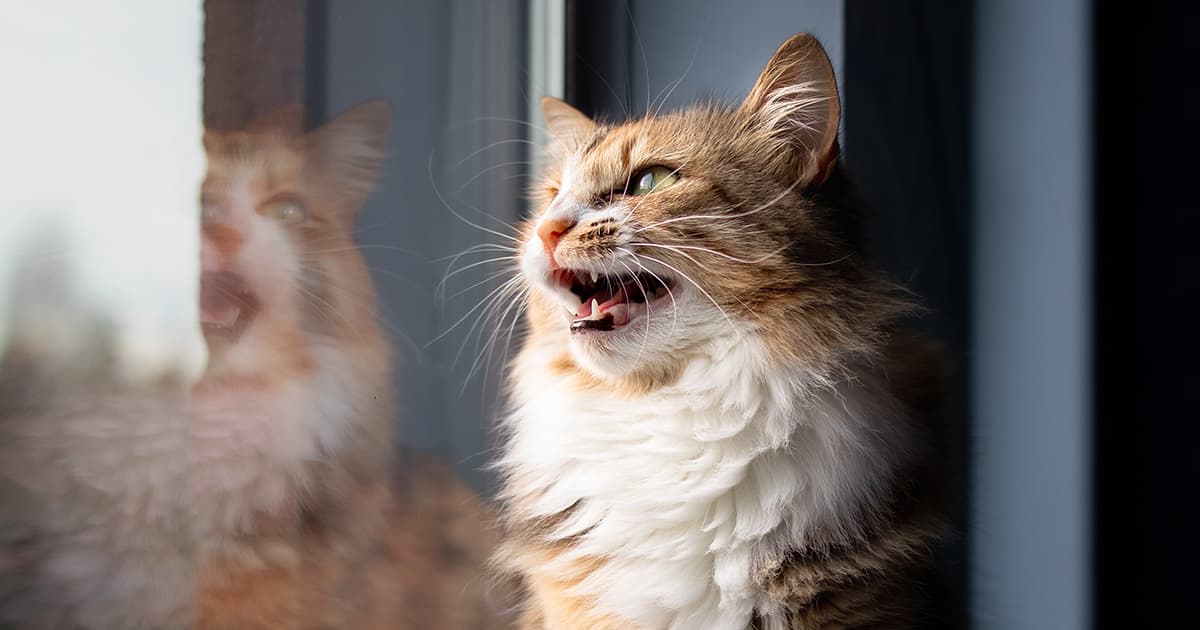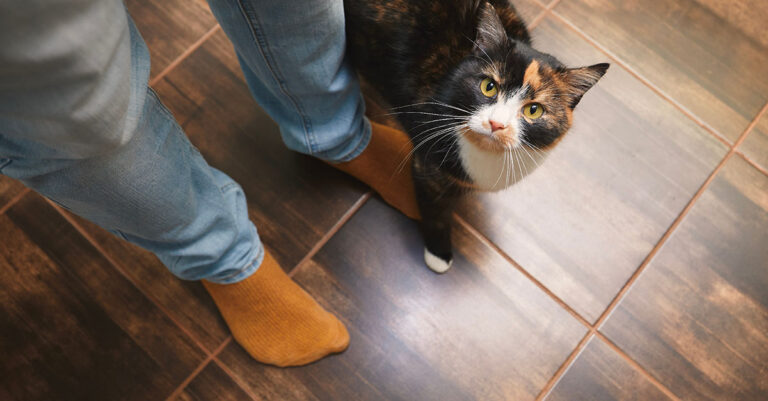It’s past dinnertime and your cat’s frantically meowing while doing figure eights around your legs. It’s pretty obvious what those meows mean: “Where. Is. My. Food!” But there are other times you’re not so sure what all the noise is about. You’ll probably never know everything your cat wants to tell you, but here’s some insight into what some of their vocalizations might mean.
Meows Are for People
If it seems like your cat is trying to speak to you directly when they’re meowing, it’s because they are. Adult cats rarely meow to communicate with other adult cats — it’s a vocalization they use just for “talking” with people. Kittens meow to talk to other cats and get their mothers’ attention, but if your adult cat is meowing, it’s likely you they want attention from. If it’s a nice-sounding, high-pitched meow, they’re probably asking for something, like food or snuggles. But if the meow sounds low-pitched and snarky, then they’re likely past the asking stage and are demanding something. Now.
Cats use meows to try to communicate with us, but how good are people at interpreting what different types of meows actually mean? According to one study, not that great. In an online questionnaire, 225 participants listened to three types of meows and were asked to identify the context: waiting for food, isolation or brushing. Waiting for food was the most recognized meow, but still only 40 percent of participants chose correctly. As you would expect, cat owners did better than nonowners.
Excessive meowing could be your cat really wanting your attention, but it can also be a sign of a health issue. Older cats with dementia can meow more than normal, as can cats with hyperthyroidism or hypertension. It’s a good idea to have your veterinarian rule out any health issues if your cat seems to be meowing more than normal.
Contented Purring — Most of the Time
If you’re snuggled on the couch with your purring kitty and they’re calm and relaxed, that’s a pretty good sign that all is well with them. Most of the time purring means your cat is happy and content, but sometimes cats purr because they are stressed, sick or in pain. The best way to check if your cat’s purr is the happy kind is to also look at their body language and behavior. If your cat has a hunched posture, hides from you, stops eating or doesn’t use the litter box, it’s time to call your veterinarian.
Other Cat Vocalizations
Cats make a lot more sounds than meows and purrs. In fact, researchers have described more than 20 cat vocalizations. The authors of this review described what those vocalizations are and the situations they’re typically used in. Here are some examples from their review.
Caterwaul: Long, loud whine used as a warning or in reproductive situations
Chirp: High-pitched short sound used to locate other cats, because they want something or between kittens and their mother
Gurgle: Short, low sound used to make friends or reassure others
Hiss: Drawn-out exhalation with exposed teeth used as a warning
Tweedle: Prolonged chirp used when they really want something
Yowl: Long, harsh call used in mildly threatening or reproductive situations
Every cat is different and so are the meanings behind their vocalizations. But by paying attention to the context of the situation and also looking at their body language, you may be able to understand what it is your cat wants to tell you.
RELATED POST: Cracking the Code on a Cat’s Enjoyment of Food







